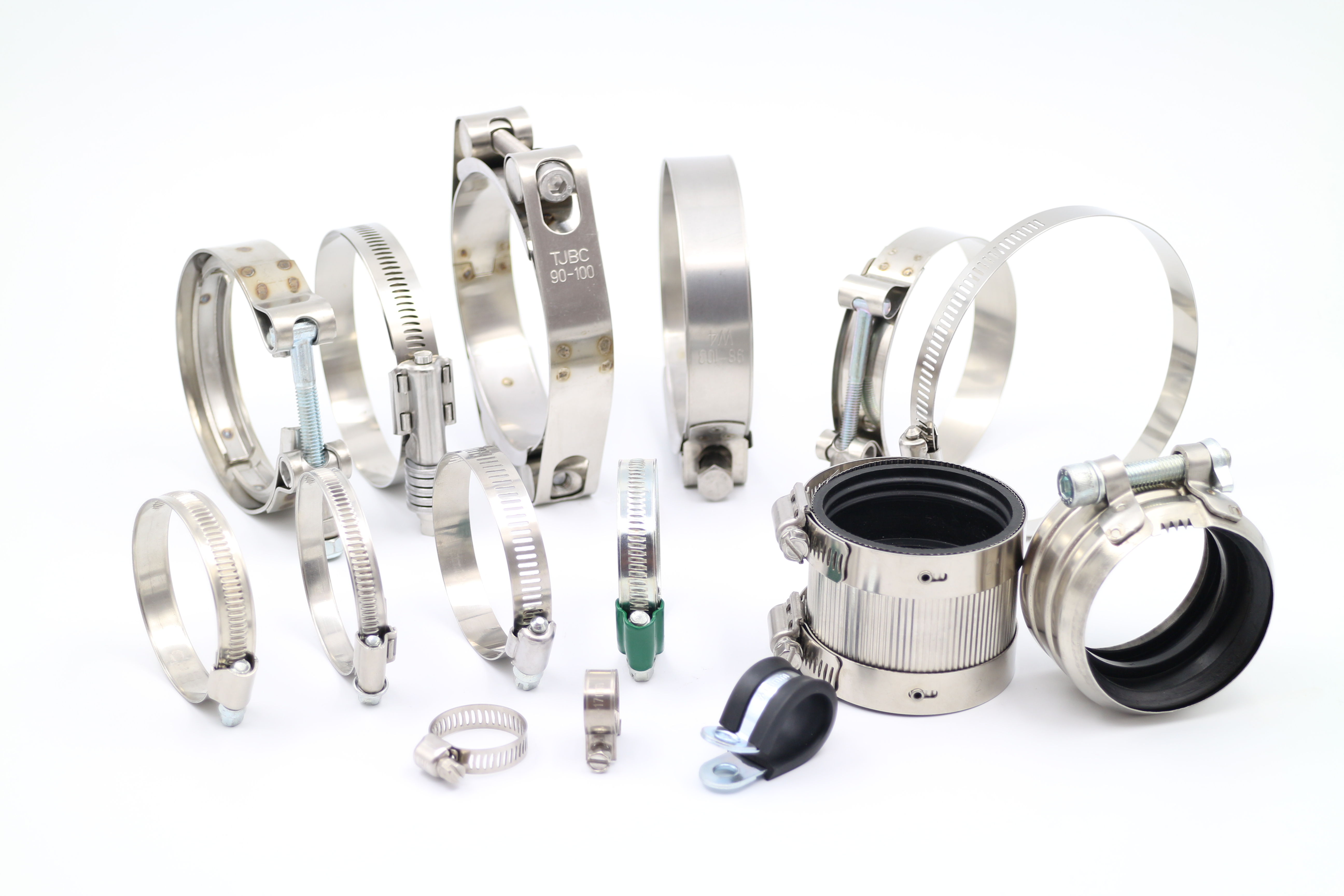Hose home specifications and material selection
Release time:
2024-10-14

The specification and material selection of hose clamps are critical to their application effectiveness and performance. The following is a detailed analysis of the hose collar specifications and material selection:
First, the selection of hose clamp specifications
The specification of the hose clamp is usually expressed by its model, and the common models are 0.25cm, 0.6cm, 1.0cm, 1.6cm and 2.5cm. These models correspond to different sizes and application ranges, as follows:
Small hose clamps: such as 0.25cm and 0.6cm hose clamps, usually used to connect small diameter pipes or occasions requiring fine adjustment. The smaller size of these throats allows for a tighter fit and higher sealing performance.
Medium hose clamp: such as 1.0cm and 1.6cm hose clamp, suitable for medium diameter pipe connection. These throats strike a good balance between strength and sealing performance to meet the needs of most piping systems.
Large hose clamp: such as 2.5cm hose clamp, usually used to connect large diameter pipes or need to withstand greater pressure occasions. These hoses have higher strength and a wider adjustment range to ensure the stability and safety of the piping system.
When selecting hose clamp specifications, you need to consider the outside diameter of the pipe, working pressure, fluid medium, and installation environment. Ensure that the hose clamps selected match the specifications of the piping system for optimal tightening and sealing.
Second, the choice of hose clamp material
The material of the hose clamp has an important effect on its performance and service life. Common hose clamp materials include plastic, metal (such as carbon steel, stainless steel) and rubber. Different materials have different characteristics and application scenarios:
Plastic throat band:
Advantages: lightweight, easy to install, and has certain corrosion resistance and insulation properties.
Disadvantages: poor resistance to high temperature and high pressure, easy aging, usually one-time use.
Application scenario: It is suitable for situations where the temperature and pressure are not high, such as household water supply and drainage systems.
Metal throat band:
Advantages: High strength, good stability, can withstand high temperature and high pressure, and can be reused.
Disadvantages: easy to rust, oxidation, need to do anti-corrosion treatment.
Application scenario: Suitable for high temperature and pressure requirements, such as industrial pipeline system, automobile manufacturing and other fields.
Specific material:
Carbon steel: has high strength and rigidity, but poor corrosion resistance.
Stainless steel: With excellent corrosion and heat resistance, it can meet the needs of most harsh environments. Stainless steel hoses also include a variety of types, such as austenitic stainless steel, ferritic stainless steel, martensitic stainless steel, etc., the specific choice needs to be determined according to the working environment and requirements.
Rubber hose hoop:
Advantages: Soft, shock-proof effect is good, will not produce too much noise.
Disadvantages: easy to aging, cracking, need to be replaced often.
Application scenario: Applicable to applications that require shock and noise reduction, such as the pipe connection of water pumps and fans.
When choosing the material of the hose hoop, it is necessary to consider the working environment, fluid medium, temperature, pressure and economic factors. Ensure that the material of the hose hoop is selected to meet the actual needs, taking into account its durability and maintenance costs.
In summary, the specifications and material selection of the hose hoop need to be determined according to the specific application scenarios and needs. Through reasonable selection, it can ensure the best tightening and sealing effect of the hose band in the pipeline system, and ensure the stability and safety of the pipeline system.
Related News



